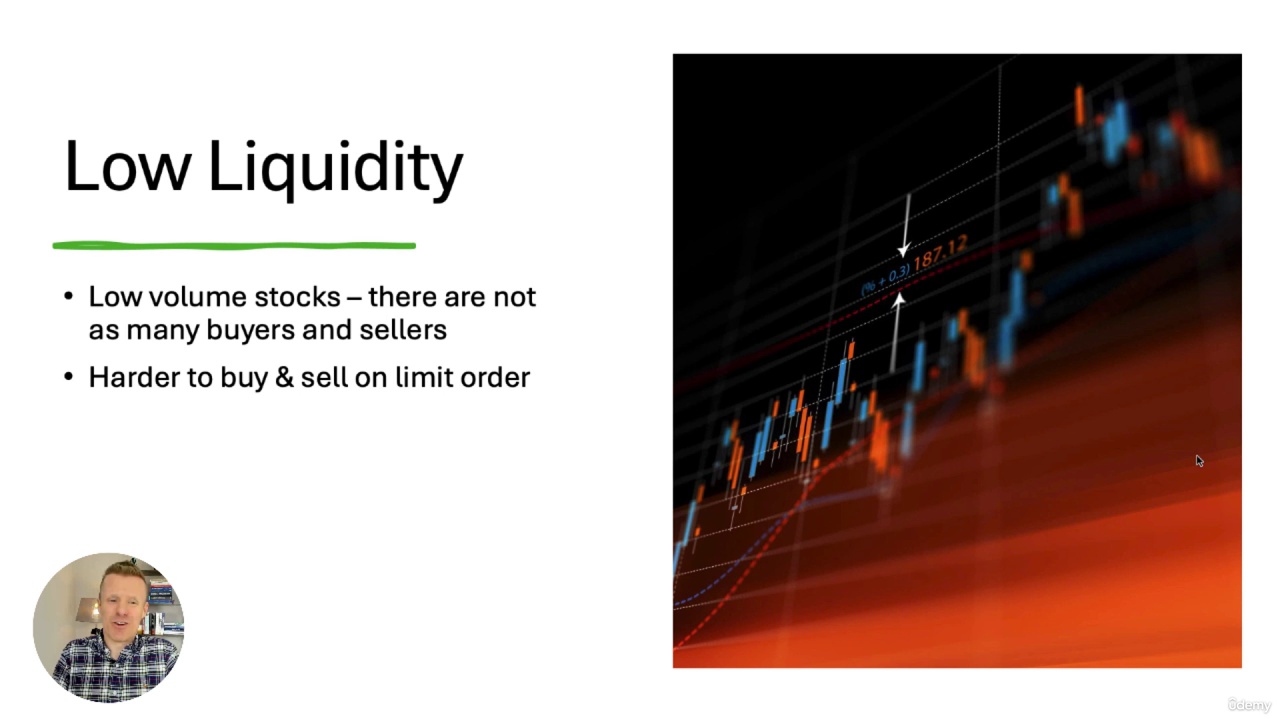MACD LWMA Strategy - 126.0 % Return on Account.
Kenneth Bach
1:19:28
Description
MACD LWMA Strategy - 126.0 % Return on Account. All indicators for this strategy is ready for download.
What You'll Learn?
- Trade the MACD LWMA strategy.
- How to create a tradingplan.
- Read and understand price charts.
- Handle trading psychology.
Who is this for?
What You Need to Know?
More details
DescriptionHow to trade the MACD crossover with LWMA confirmation strategy.
All indicators for this strategy is ready for download.
The MACD (Moving Average Convergence Divergence) crossover with LWMA (Linear Weighted Moving Average) confirmation is a popular trading strategy used by technical analysts. Here are the steps to trade this strategy:
Step 1: Understand the Indicators
MACD: The MACD consists of two lines, the MACD line, and the signal line. The MACD line is calculated by subtracting the 26-period exponential moving average (EMA) from the 12-period EMA. The signal line is typically a 9-period EMA of the MACD line.
LWMA: The LWMA is a moving average that assigns more weight to recent price data, making it more responsive to price changes.
Step 2: Identify the MACD Crossover
Look for a bullish MACD crossover: This occurs when the MACD line crosses above the signal line, indicating a potential buy signal.
Look for a bearish MACD crossover: This occurs when the MACD line crosses below the signal line, indicating a potential sell signal.
Step 3: Confirm with LWMA
Once you identify a MACD crossover, use the LWMA as confirmation before entering a trade.
For a bullish MACD crossover, confirm the signal by ensuring that the price is trading above the LWMA.
For a bearish MACD crossover, confirm the signal by ensuring that the price is trading below the LWMA.
Step 4: Enter and Manage the Trade
Enter the trade after the MACD crossover is confirmed by the LWMA.
For a bullish trade, consider buying the asset or entering a long position.
For a bearish trade, consider selling the asset or entering a short position.
Set a stop-loss order below the recent swing low for long trades or above the recent swing high for short trades to manage risk.
Consider using additional technical analysis tools or indicators to identify potential profit targets and exit points.
Step 5: Monitor and Adjust
Monitor the trade and adjust your stop-loss or profit targets as the price progresses.
If the trade moves in your favor, consider trailing your stop-loss order to protect profits.
If the MACD or LWMA signals change (e.g., a bearish crossover after a bullish crossover), consider exiting the trade to avoid potential losses.
It's important to note that no trading strategy is foolproof, and it's always recommended to backtest and practice any strategy before using it with real money. Additionally, consider incorporating risk management principles and using proper position sizing to protect your capital.
Who this course is for:
- Beginners.
How to trade the MACD crossover with LWMA confirmation strategy.
All indicators for this strategy is ready for download.
The MACD (Moving Average Convergence Divergence) crossover with LWMA (Linear Weighted Moving Average) confirmation is a popular trading strategy used by technical analysts. Here are the steps to trade this strategy:
Step 1: Understand the Indicators
MACD: The MACD consists of two lines, the MACD line, and the signal line. The MACD line is calculated by subtracting the 26-period exponential moving average (EMA) from the 12-period EMA. The signal line is typically a 9-period EMA of the MACD line.
LWMA: The LWMA is a moving average that assigns more weight to recent price data, making it more responsive to price changes.
Step 2: Identify the MACD Crossover
Look for a bullish MACD crossover: This occurs when the MACD line crosses above the signal line, indicating a potential buy signal.
Look for a bearish MACD crossover: This occurs when the MACD line crosses below the signal line, indicating a potential sell signal.
Step 3: Confirm with LWMA
Once you identify a MACD crossover, use the LWMA as confirmation before entering a trade.
For a bullish MACD crossover, confirm the signal by ensuring that the price is trading above the LWMA.
For a bearish MACD crossover, confirm the signal by ensuring that the price is trading below the LWMA.
Step 4: Enter and Manage the Trade
Enter the trade after the MACD crossover is confirmed by the LWMA.
For a bullish trade, consider buying the asset or entering a long position.
For a bearish trade, consider selling the asset or entering a short position.
Set a stop-loss order below the recent swing low for long trades or above the recent swing high for short trades to manage risk.
Consider using additional technical analysis tools or indicators to identify potential profit targets and exit points.
Step 5: Monitor and Adjust
Monitor the trade and adjust your stop-loss or profit targets as the price progresses.
If the trade moves in your favor, consider trailing your stop-loss order to protect profits.
If the MACD or LWMA signals change (e.g., a bearish crossover after a bullish crossover), consider exiting the trade to avoid potential losses.
It's important to note that no trading strategy is foolproof, and it's always recommended to backtest and practice any strategy before using it with real money. Additionally, consider incorporating risk management principles and using proper position sizing to protect your capital.
Who this course is for:
- Beginners.
User Reviews
Rating
Kenneth Bach
Instructor's Courses
Udemy
View courses Udemy- language english
- Training sessions 28
- duration 1:19:28
- English subtitles has
- Release Date 2023/08/16






![Profitable Binary Options Trading Strategy [NEW]](https://traininghub.ir/image/course_pic/39592-x225.webp)



